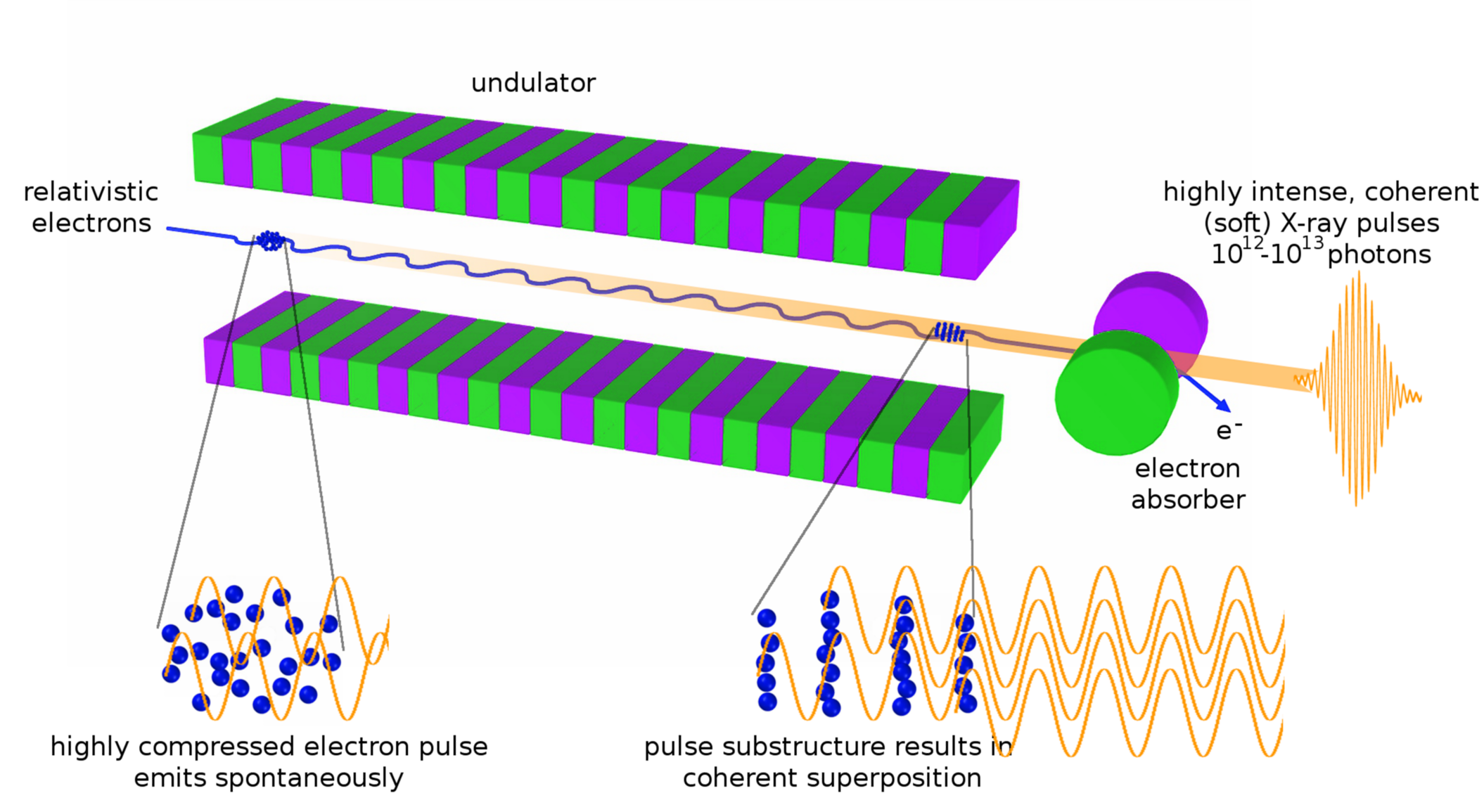X-Ray Free-Electron Laser (XFEL): A Breakthrough in Nanoscale Imaging
What are X-Ray Free-Electron Lasers?
X-ray free-electron lasers (XFELs) are a revolutionary type of X-ray source that produce ultra-short, highly intense pulses of X-rays. Unlike conventional X-ray sources, XFELs generate X-rays through a process called self-amplified spontaneous emission (SASE). In this process, a beam of electrons is accelerated to nearly the speed of light and passed through a series of alternating magnetic fields, causing the electrons to wiggle and emit X-rays.

Key Features of XFELs
- High Brilliance: XFELs produce X-ray pulses with an unprecedented peak brilliance, exceeding that of conventional synchrotron X-ray sources by several orders of magnitude. This high brilliance enables the study of extremely small and weakly scattering samples.
- Femtosecond Pulse Duration: The X-ray pulses generated by XFELs are extremely short, typically lasting only a few femtoseconds (10-15 seconds). This ultra-short pulse duration allows for the capture of ultrafast processes, such as chemical reactions and phase transitions, in real-time.
- Coherence: XFEL pulses exhibit a high degree of spatial and temporal coherence, meaning that the X-rays are in phase with each other. This coherence enables advanced imaging techniques, such as coherent diffractive imaging and X-ray holography.
- Wavelength Tunability: The wavelength of the X-rays produced by XFELs can be tuned by adjusting the energy of the electron beam and the parameters of the undulator. This tunability allows researchers to probe specific atomic and molecular transitions, enabling element-specific and chemically selective imaging.
Applications of XFELs in Nanotechnology
Nanoscale Imaging
XFELs have revolutionized the field of nanoscale imaging by enabling the study of nanostructures with unprecedented spatial and temporal resolution. The high brilliance and short pulse duration of XFEL pulses allow for the imaging of individual nanoparticles, biomolecules, and even single atoms. Techniques such as serial femtosecond crystallography and single-particle imaging have been developed to utilize the unique capabilities of XFELs for structural determination of nanoscale objects.
Ultrafast Dynamics
The femtosecond pulse duration of XFELs enables the study of ultrafast processes in nanomaterials. By triggering chemical reactions or phase transitions with an optical laser pulse and probing the system with an XFEL pulse at various time delays, researchers can observe the real-time dynamics of nanoscale phenomena. This capability has shed light on fundamental processes such as charge transfer, bond formation, and structural rearrangements in nanomaterials.
Nanomaterial Characterization
XFELs provide a powerful tool for the characterization of nanomaterials. The high brilliance and wavelength tunability of XFEL pulses allow for element-specific and chemically selective imaging of nanomaterials. Techniques such as X-ray absorption spectroscopy and resonant inelastic X-ray scattering can probe the electronic structure and chemical bonding in nanomaterials with high sensitivity and specificity.
Challenges and Future Perspectives
Despite the remarkable capabilities of XFELs, several challenges remain in their application to nanotechnology. One of the main challenges is the development of sample delivery systems that can efficiently deliver nanoscale samples to the XFEL beam while minimizing sample damage. Additionally, the vast amount of data generated by XFEL experiments requires advanced data processing and analysis techniques to extract meaningful information.
Future developments in XFEL technology will focus on improving the stability, reproducibility, and accessibility of XFEL sources. The integration of XFELs with other advanced characterization techniques, such as electron microscopy and mass spectrometry, will provide a more comprehensive understanding of nanoscale systems. Furthermore, the application of machine learning and artificial intelligence approaches to XFEL data analysis will enable the discovery of new insights and the optimization of nanomaterials for specific applications.
Further Reading
Nature Photonics, X-ray free-electron lasers
The Innovation, Features and futures of X-ray free-electron lasers
